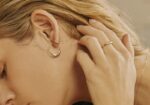What Diamond Shape Should You Get for an Engagement Ring?

Diamonds are some of the most popular and sought-after gemstones in the world, with their sparkling beauty and lasting value. But when it comes to buying an engagement ring or other jewellery, one important factor is often overlooked: the cut of the stone. The cut of a diamond plays an essential role in how the stone looks and sparkles, and can determine its value and overall beauty.
When buying an engagement diamond ring in Singapore, it’s important for diamond shoppers to understand how diamond cuts are rated. Cut grades range from Excellent to Poor, with many sub-divisions within each grade. A diamond with an Excellent cut grade reflects more light than a diamond with a Poor cut grade.
Understanding Diamond Cut
Diamonds are known for their capacity to transmit light and for their dazzling glitter. We frequently associate a diamond’s cut with its form (round, oval, heart, marquise, or pear), but the term actually refers to how a diamond’s facets interact with light.
A stone must be crafted with exacting skill and craftsmanship in order for its dimensions, symmetry, and polish to produce the spectacular return of light seen only in diamonds.
The final beauty and worth of a diamond are reflected in its cut quality, which is the most intricate and technically challenging of the diamond’s four grading characteristics (or 4Cs).
The proportions of the facets that affect the face-up look of the diamonds are calculated by the GIA to determine the cut grade of the typical round brilliant diamond, which makes up the majority of diamond jewellery.
It analyses how well a diamond interacts with light to produce appealing aesthetic effects, such as:
- Brightness: A diamond’s internal and external white light reflections.
- Fire: The rainbow’s colours created as white light is dispersed into them.
- Scintillation: The quantity of glimmer a diamond emits as well as the pattern of light and dark regions brought on by internal reflections in the diamond
The thickness of the girdle (which influences the durability of the diamond), the symmetry of the facet arrangement, and the degree of polish on those facets are all factors in the GIA’s diamond cut grade. The grade also considers the design and craftsmanship of the diamond.
The GIA Diamond Cut Scale is the gold standard for grading diamond cuts and includes 5 grades from Excellent to Poor for a typical round brilliant cut diamonds in the D-to-Z colour range.
How Does Pavilion Depth Affect A Diamond’s Cut?
The pavilion depth is measured from the girdle’s base to its culet. If the pavilion depth is too deep or too shallow, light will leak out of the bottom or through the stone’s side. More light will enter the crown of a diamond with a good cut.
In addition, it is important to understand that the cut of a diamond also affects its price. A higher quality cut will be more expensive than one with a lower quality cut. Ultimately, finding the right combination of shape and cut grade is key in getting the best possible diamond for the price.
What are the Popular Cuts for Diamond Rings?
One of the most important decisions when shopping for a diamond ring is to choose the right cut. Not only does it affect how much light and sparkle the ring will have, but also your overall satisfaction with the finished product.
Here are the popular cuts for diamond engagement rings so you can make an informed decision about your purchase.
Round Cut
The most popular cut for diamond ring in Singapore is round. Round diamonds are classic and timeless, and have been around for centuries. They are known for their dazzling sparkle, which is created by the round shape that helps to maximise the reflection of light from each side of the stone.
Another advantage of round diamonds is that they look great in almost any setting, making them a great choice for those who want to be able to customise the ring and choose from many different styles.
Oval Cut
Oval diamonds are another popular cut for engagement rings. They have an elongated shape that creates the illusion of greater size and carat weight than round diamonds of equal size, yet they still offer plenty of sparkle and brilliance.
The oval shape also allows for more flexibility when selecting a setting, as it is easier to create unique designs with this cut.
Princess Cut
The princess cut diamond has become increasingly popular in recent years. It’s square or rectangular shaped with sharp edges and corners, which helps maximise the amount of light that reflects from each side of the diamond. This cut also creates a more contemporary look, making it great for those who want something modern and unique.
Emerald Cut
The emerald cut is one of the most classic diamond ring cuts, featuring a long rectangular shape that can play off the light beautifully. This cut has been around since the late 1800s and is still very popular today. Emerald cut diamonds are often seen in two or three stones set in an emerald-cut halo setting.
Marquise Cut
The marquise cut is another popular choice for diamond rings, giving a more modern look. This cut features an elongated shape with two pointed ends. Marquise diamonds can be set in any style of setting, but they tend to look best as solitaires or in simple three-stone settings.
Asscher
The asscher cut is a relatively new diamond shape, first designed by the Asscher Brothers in 1902. This emerald-cut style features cropped corners and larger step facets which create more sparkle than the emerald cut.
The classic version of this cut has 58 small step facets that are arranged around the centre of the stone for maximum brilliance. The asscher cut is perfect for those who want a modern look with an art deco feel.
Cushion Cut
The last popular cut for diamond rings is the cushion cut. This cut is round on the top and bottom with rounded corners, giving it an almost pillow-like appearance. It offers plenty of sparkle and brilliance while still having a softer, more intimate feel. It is also great for those who want a more romantic, vintage look.
No matter what cut you choose, make sure to do your research before choosing a diamond ring. Consider factors such as size and quality, as well as budget and setting style. By doing this, you can be sure that you’ll find the perfect engagement ring for your partner.
These are just some of the popular cuts for diamond rings. Do your research and choose the one that best meets your needs and style preferences. With the right cut, you can have an elegant and timeless engagement ring that will be treasured for years to come.
Takeaway
The cut of a diamond ring is an important factor to consider when buying an engagement ring. It affects the beauty and brilliance of the stone and can greatly impact its price. Understanding the shape, cut grade, and what makes for a good quality cut can help ensure that you get the best possible diamond engagement ring for your money.











